This review page is supported in part by the sponsors whose ad banners are displayed below |
 |
For the same crime, you can't be tried twice*: In April 2004, I'd reviewed the original Reference 3 and created our Lunar Eclipse award in response. Since then this award has only been bestowed four more times. Except for low-bass air displacement, concomitant weight and power zone kick, the Strada with help from the TR3 now was better. Alas, the law said I had to let 'em walk despite the arrest warrant of an outstanding award. On to the real business. The Stradas segued into the big system without a misstep. There they expanded scope and scale of the soundstage to truly epic proportions. Room-filling volumes over the killer 30wpc Peachtree Audio iDecco didn't exceed 2:00 o'clock on the dial. The sound was vintage Gallo with a boundless walk-in soundstage of exquisite layering; very finely articulated filigree work embedded in high-mass detail; and obviously honed yet relaxed reflexes.
___________________
* This is a ploy to leave room for the Ref 3.5s. In case. And there is one area described below where I feel the Stradas—relative to their generally very elevated performance niveau—are a bit compromised.
|

|
This was again related to full-range electrostatic sound in coherence and transparency. Yet the Stradas advanced over my memory of the floorstanding elders with a smoother easier feel behind that amazing resolving power; a bit more vocal range fullness; and a complete and utter absence of overload sharpness in the top end. In headfi, the above system equaled my Sennheiser HD800 driven from the iDecco - and the OPT® changes mirrored the improvements of the ALO Audio replacement wire harness on the cans over my memory of earlier Gallos. The center stage TR3 did integrate seamlessly as promised and didn't wave for attention as a separate entity. All I really lacked when applying 'ultimate' standards in line with the rest was power zone wallop in the 100 to 200Hz band; and low-bass mass. The sound here was just as fast and controlled as the rest but somewhat slim or small if you will. But everything was very intelligible and clean. No hotspots, no boom zones, no mud, no glinty flashes. Bass extension was very impressive—the operative terms again were clean and articulate—but the bass character lacked mass. Hence it did not provide the virtual injection of black into the color palette which then would have further saturated tone.
|
 |
Regardless of low-pass setting, the upper bass didn't exhibit the feisty impact my same-priced Zu Essence produce (by counter blows, the Strada/TR3 combo went lower, had patently more resolution and soundstaged spookier). The power zone was where I suspected the inbound Reference 3.5 would advance over this threesome. If so, subsequent Strada experiments with two subwoofers suggested it wouldn't be only about stereo vs. mono bass (two subs did increase bass weight in the 30Hz range). There's also proximity of bass to midrange makers. After all here we're still directional. The Stradas cluster so tightly into a 'point' source that handing over at ±100Hz to an offboard woofer sited 1.5 meters away might—I'm fishing—explain why despite the admirable evenness of the response, this arrangement did not create stiffer punch in the third octave.
|
 |
I'm nit-picking of course. That's why they pay us the big bux. Or so I'm told. As an amplifier load, I encountered surprisingly modest changes when moving on to the 50wpc Audio Analogue Crescendo gainclone*, then the 80wpc push/pull bipolar Aaron Limited Edition XX integrated and finally the 150wpc super integrated Stello Ai500 from April Music. I only veered deeper into articulation and tautness. This included the low bass which was supplied line-level. It clearly suggested that the subwoofer's own amp distinguished the signal quality passed on from different machines. My takeaway from playing the conga line was that the zero-xover Strada is a low-maintenance date. The speaker works very well with affordable electronics particularly because the yeoman work of deep bass gets delegated. When it comes to bean counting and budgets, even with two subs there's another pricing advantage over the new Reference 3.5.
__________________
* The only failing of this €699 all-Italian integrated in this context was its lack of variable outputs. I had to use the fixed output and trim the TR3 level control manually with each change of master volume setting.
|
 |
Many Ref 3/3.1 owners learned that beefy main amps like a big McCormack, ModWright, Odyssey or Spectron made Gallo's optional bass amp on the 2nd woofer voice coil inputs unnecessary. Those sealed no-volume 10-inchers love power and only salute properly when forced. While class D lovers tell us that power is cheap, power highly finessed—especially so in the treble to complement the CDTIII—isn't necessarily so. Again, the Strada's minimized power requirements save further dosh on amplification. Muscle is already built into the powered sub/s. Thus the overachieving $995 iDecco was perfectly sufficient for the cause.
|
|
|
 |
A walk through the park: Like his two previous albums, Mercan Dede's 800 [DoubleMoon] is superb organic ambient fare. It combines superior performers on acoustic instruments with expert studio trickery and artificial low bass. And Dede is a soundstage freak of the highest order. He erects complexly layered wide spaces whose expertly recorded and embedded soloists demand all the traditional virtues of high-fidelity playback while the unnaturally endowed synth bass and drums add modern demands to challenge a system not to get muddy higher up yet do justice to the infrasonic tonnage. It's a marriage of purity, clever cheating and compelling musical story telling. It makes for great company, educational demo material and here good insights into Strada strengths. Minimized phase errors create more accurate staging. Harmonic fingerprints of tones don't scatter to have upper harmonics arrive early, matching fundamentals late.
|
|
 |
 |
So the Stradas too were soundstaging freaks. They took to the Turkish DJ like fire to oil. From deliberately panned wandering reverb to discrete acoustics in adjacent sound bubbles stemming from different recording sessions spliced together, it all was clear as day.
Take hammered zithers like the Turkish kanun or the Romanian cymbalom. About the size of a small table sitting in front of the player, different sounds spring forth from different lateral locations in rapid succession. Furious ping pong of fundamentals and swarming ricochets of overtones stayed put as though in slow motion while all around them drums chattered, synth beats rolled and a bass clarinet staccatoed.
There were many such islands in the storm. Which to pick for inspection or whether to step back and let the whole become oceanic was simply a matter of attention and desire. That's very high resolution.
|
|
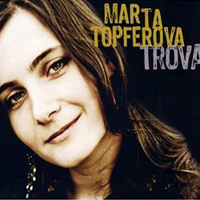 |
For fancy tone modulations, I took Rocky Gresset's self-named album [Dreyfus Jazz] for a spin. Dedicated to Vicente Amigo no less, "Ballade Pour Rose" is a wistful meditation on timbre shifts that crisscross from spiked to hooded, fierce to mellow, piercing to suggestive. It's a game about on-string nuances and how Rocky's wilfulness manipulates the harmonic envelope of his Horo guitar. The Stradas tracked this most acutely. |
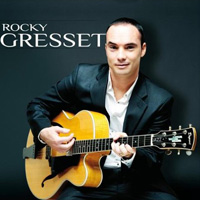 |
|
Ditto Cuban-style hand percussion like congas, bombo, cajon and pandeiro as you'd find on Marta Topferova's second album Trova [World Village - a London Times quote nails it: "One of the most graceful interpreters of Latin American folk music"]. All these and other percussive events had that tacit skin-on-skin rightness. It seemed lit up or illuminated from above as though it'd been close-mic'd regardless of what thicket surrounded it.
|
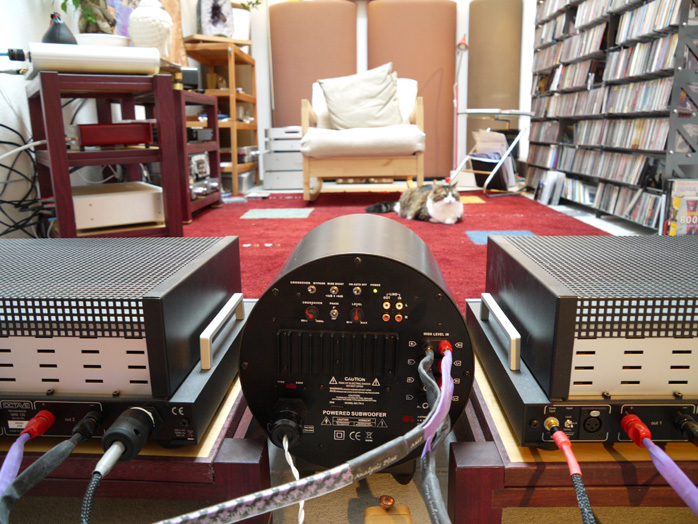 |
Despite phenomenally nitty gritty exactitude, things never got mechanical or relentless. That clearly was the newly relaxed character of the OPT® recipe. To test valves, I brought in my €10.000/pr Octave MRE-130 muscle amps. Because I didn't have another 4-meter interconnect, the TR3 this time connected speaker-level. This wasn't quite as good as before. The bass quality had been best coming off the variable outputs of the Stello Ai500. The German tanks of course did things differently on tonal fullness or textures. However, I ultimately preferred the Stello. This warrants a brief explanation.
Resourceful audiophiles with a very clear sonic blueprint in their brains can create the same kind of sound with wildly different ingredients. This follows the 'all roads to Rome' notion. But you could rightfully ask why. One might instead chase a given variation on achievable sonic perspectives to its logical conclusion. Like appreciating Thai and Italian cuisine and giving up on making Thai taste like Italian. Or vice versa.
|
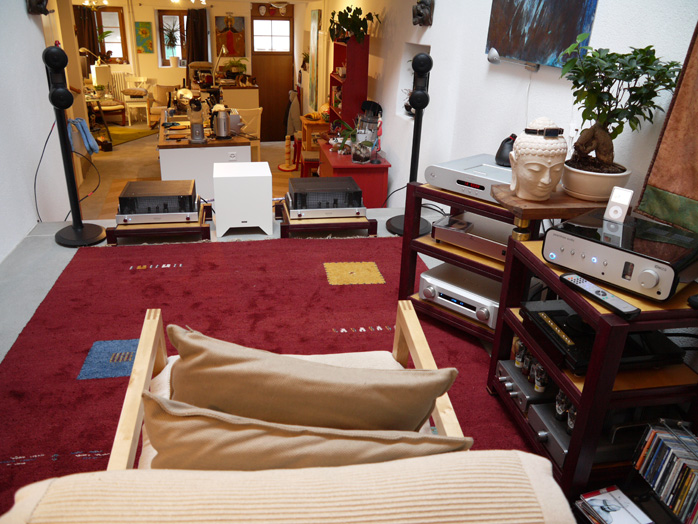 |
The Gallo sound is clearly about speed, finesse and lithe ankles. Even superior non-valve valves as the big Octaves thickened those ankles. Things settled more into gemütlich and just slightly fuzzier. If that's your preference, perfect. Personally, I thought it diluted the essential Strada virtues as though one attempted to make them sound more conventional. Hence I stuck with transistors. Because my FirstWatt amps aren't integrateds to allow for the superior line-level connection to the subwoofer/s, my preferred amplifier became the Ai500 integrated
|
|
|
 |
To qualify the TR3 and double-check whether my previous nit on upper-bass punch would stick, I moved in Amphion's Impact 400. The bigger box clearly produced more low-end growl but the upper bass transition remained texturally unaffected. Isolating this narrow band for critique suggests nothing untoward. It's pickiness given just how high a standard this speaker sets elsewhere. To wrap up bookkeeping, the TR3 amp hums a bit. It's not loud enough between tracks to register in the seat but not perfectly mum either to warrant a mention.
|
|
|
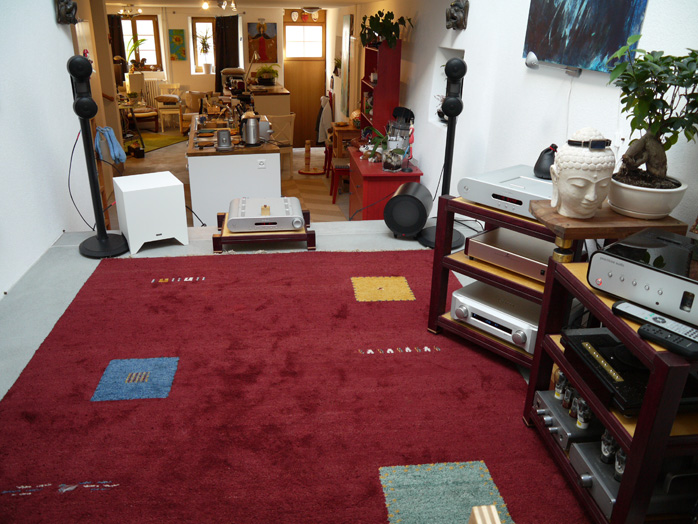 |
Obviously the TR3 also isn't designed as peak-output depth charger for THX-style idiocies. It was specifically calibrated as a Strada music sub and includes the new ceramic-coated aluminum woofer of the Reference 3.5. While on hardware still, the stand uprights are hollow to route cables which exit right behind the terminals and below the base plates. The bases can sit flat on hardwood, tile or concrete floors or get pointy on three spikes for carpets. The desk-top stands sport a scale-marked swivel lock to move the horizontal axis up or down and I'm told the wall mounts—delivery includes either a desk-top or wall mount while the floor stands are extra—do likewise.
|
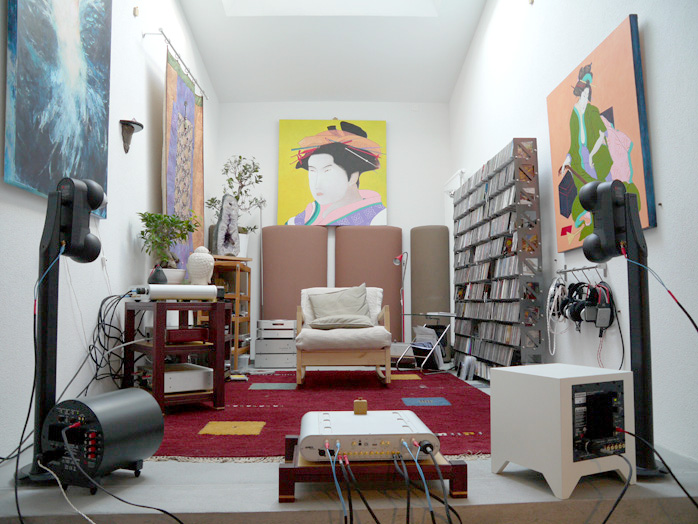 |
The wrap: If you own a vacation rental, wall-mount a pair of white Stradas, run them off a Peachtree Audio iDecco and advertise your pad in your domestic enthusiast mags as "audiophile vacation in paradise, just bring iPod". For higher rent, offer a TR3. And yes, two TR3s are better yet but one already has the system go beyond the original Reference 3.
To borrow from Bill Murray's Dr. Peter Venkman character in Ghostbusters, Anthony Gallo's bag o' new cheap tricks bring benign unforced ultra resolution into the financial realms of ordinary mortals. I'll refrain from Pierre Sprey-style specifics on which wildly more expensive speakers the Strada trounces. I'll simply say that being familiar with a number of them, I was unprepared how the Stradas in this regard do show many of them a clean set of heels.
I didn't meet up with any SPL starvation. In my room, they could play louder than I'd ever get away with or could stomach for any length of time.
After hearing the Stradas, the issue of price frankly never came up. Except in a good way.
The significant size of the stand plinths for example was necessary because of the Strada's weight. Despite its compactness, this is a heavy speaker with very considerable material density.
You're buying real substance. Then comes heavy performance. While this speaker does benefit from premium amplification, what exactly becomes premium is nicely relaxed. Something like Aaron's new Limited Edition XX integrated for €2.000 is all most well-educated audiophiles with high ambitions would need to be in the clear and leave nothing under the table.
|
|
|
While I never had rug-rat problems with the Reference 3 (other listeners complained about low soundstage height), the floorstanding Strada is too high off the ground for that. On tubes, I'd personally be suspicious that valve amps priced to match will take away from those performance attributes which rely on the impulse response and generally very low distortion. This is a very 'fast' low-distortion speaker whose time coherence shows up even fine meddling. Why make it behave other than what it was designed to do? It's possible of course. I'd just consider it missing the point.
To many listeners, resolution has become a dirty word. I'm very sympathetic. But Anthony Gallo's latest thinking and implementations are one example of meaningful advances which don't rob Paul to pay Bob. If you fancy all the visual elements of music playback, listen to the Stradas with one or two subs. This could be quite the wake up call on how much you thought it would cost to get this. Particularly evocative high-quality soundtracks—imagine a lone sitar player surrounded by falling rain, clattering tea cups and outdoor din; or a Mongol horde on horseback clashing with another, hooves on sand, blades crashing, rousing symphonic score in the background—showcase the highly visual attributes of the Strada's resolution relative to soundstaging and minute details within it.
|
 |
The Stradas very uncannily glom to how a recording was mastered - with all the musicians recorded together in real acoustics or spliced and cooked in faux sauce. Take Vicente Amigo's latest. It's stupendous music and as a recording, above average. But compared to 21 Strings from the Al-Andalus Ensemble, the spark of life is gone. It's canned and quite interesting to identify what makes it so. Suffice to say that the Stradas let you know in a few bars and increase the gap between such commercial studio manipulations, masterful Mercan Dede exceptions and then the real deal more than most.
|
|
|
The round sound concept of two balls surrounding a nearly omni tweeter has been around now and the balls have been repeatedly copied. The looks of the Strada as Ref 3 tops hasn't really changed over six years either. There simply was still more performance to be seized from the concept. Even without its own integral woofers, the Strada proves it. What else the new Reference 3.5 will add beyond the Strada is in that review (it'll also compare the Strada/TR3 trio to the 3.5).
|
 |
The mistake the Strada invites nearly predictably is to be misjudged as a "very expensive desk-top speaker". I did. At first. It's spectacular there, nearly too much so given the usually less attentive mind set of the computer-immersed operator. That's why I was in no hurry to pull out the tall stands. I was too fascinated with big-rig performance on my work desk. It's when the Stradas become main speakers with a subwoofer assist that they show their true mettle. For context, the $3.495/pr Zu Essence is a great speaker. I own a pair that'll feature again in an upcoming review on new Chinese 300B tubes. In matters of visceral dynamics, the 97dB ten-incher with ribbon tweeter goes farther. It also has more native tone density. On general resolution and particularly from 1000Hz on up however, the Gallos are far more advanced. They also are more linear and—with the TR3 of course—more extended in the bass. For somewhat less money. In toto, here's another top performer within reach of the many that belongs on the cover of Stereophile. Covers. It's something we don't have. I let you imagine a suitable one... |
|
Quality of packing: Good.
Reusability of packing: A few times.
Ease of unpacking/repacking: Easy.
Condition of component received: Flawless.
Human interactions: I had the privilege of dealing directly with Anthony on all technical explanations.
Pricing: High value.
Warranty: 5 years upon registration.
Final comments & suggestions: The perhaps ultimate on-wall and desk-top speaker. Think of it as a low-efficiency single-driver widebander without shoutiness and higher resolution but equivalent coherence and speed. |
 |
|
 |